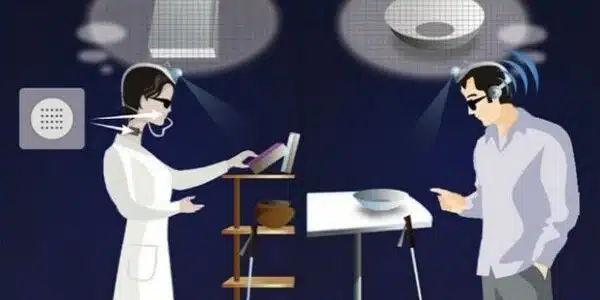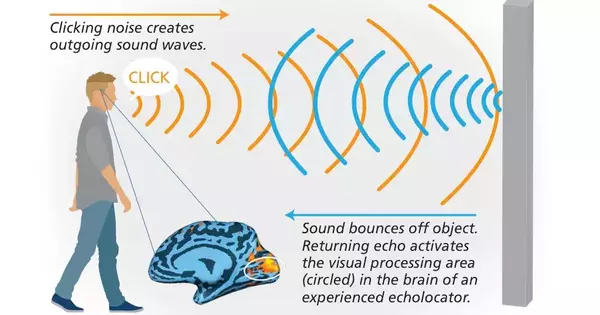The use of sound to convey visual information to the blind or visually handicapped is known as “sensory substitution” or “auditory vision.” Several technological and sensory gadgets have been developed to help blind people perceive their surroundings through sound.
According to researchers, smart glasses that use a mechanism akin to a bat’s echolocation could aid blind and low-vision persons in navigating their surroundings. Australian scientists have invented cutting-edge technology known as “acoustic touch,” which allows individuals to “see” with sound. The technology has the potential to significantly improve the lives of people who are blind or have impaired eyesight.
According to the World Health Organization, approximately 39 million people worldwide are blind, and an additional 246 million people have limited vision, limiting their ability to participate in daily living activities.
Researchers from the University of Technology Sydney and the University of Sydney collaborated with Sydney start-up ARIA Research to create the next generation of smart glasses, which translate visual information into discrete sound icons.
The auditory feedback empowers users to identify and reach for objects with remarkable accuracy. Our findings indicate that acoustic touch has the potential to offer a wearable and effective method of sensory augmentation for the visually impaired community.
Dr Howe Zhu
“Smart glasses typically use computer vision and other sensory information to translate the wearer’s surroundings into computer-synthesized speech,” said Distinguished Professor Chin-Teng Lin of the University of Technology Sydney, a global leader in brain-computer interface research.
“Acoustic touch technology, on the other hand, sonifies objects, creating unique sound representations as they enter the device’s field of view. For example, rustling leaves could represent a plant, or a buzzing sound could represent a mobile phone,” he explained.
A study led by Dr Howe Zhu of the University of Technology Sydney into the efficacy and usability of acoustic touch technology to assist blind individuals has just been published in the journal PLOS ONE.

The device was tested on 14 people, seven of whom were blind or had impaired vision and seven blindfolded sighted people who served as a control group. They discovered that the wearable gadget, which included acoustic touch technology, dramatically improved the ability of blind or low-vision individuals to recognize and reach for objects without requiring too much mental effort.
“The auditory feedback empowers users to identify and reach for objects with remarkable accuracy,” Dr. Zhu added. “Our findings indicate that acoustic touch has the potential to offer a wearable and effective method of sensory augmentation for the visually impaired community.”
The study emphasizes the significance of developing assistive technologies in order to overcome difficulties such as locating certain household objects and personal possessions. By solving these daily obstacles, acoustic touch technology expands opportunities for people who are blind or have impaired vision, increasing their freedom and quality of life.
Acoustic touch technology may become a vital aspect of assistive technologies as technology advances, allowing users to access their environment more efficiently and effectively than ever before.














